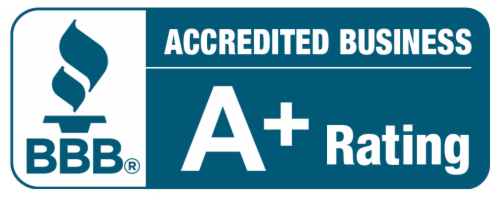The Inspection Report That Saves A Capital Budget
How Annual Roof Reports Help Property Managers Avoid Emergency Expenses
When a roof is out of sight, it’s often out of mind. Property managers, however, don’t have the luxury of waiting until something goes wrong to pay attention to this vital part of a building. A leaking roof doesn’t just mean a puddle on the floor—it can lead to costly interior damage, disruption to tenants, and unplanned expenses that put a strain on financial planning. Annual roof reports bring an element of predictability to what can otherwise be a sudden, high-stakes problem. Instead of scrambling when water finds its way inside, managers can rely on structured evaluations to keep them ahead of trouble.
A professional roof report does more than simply confirm whether shingles or membranes are intact. It captures the entire picture of the roof’s current state and projects where weaknesses may develop in the coming year. That forward-looking information is what allows managers to sidestep unpleasant surprises. With each inspection, patterns begin to emerge—whether that’s a particular drainage area that tends to clog or flashing that loosens during heavy seasonal shifts. Identifying those patterns early makes it possible to address minor deterioration before it turns into an emergency repair.
The beauty of routine reporting lies in its rhythm. Year after year, managers accumulate a record of the roof’s history, which builds a knowledge base for smarter planning. Instead of reacting, they’re steering the process, and that kind of control matters when budgets are tight and accountability is high.
How Reports Strengthen Budget Forecasting
Budgeting for property maintenance often feels like a delicate balancing act. On one hand, money must be reserved for long-term improvements. On the other, immediate operating costs can’t be ignored. Without reliable information, it’s difficult to predict how much to set aside for roofing needs. This uncertainty is what leads many managers into situations where reserve funds fall short and emergency expenditures disrupt financial stability.
Annual roof reports reduce that uncertainty by translating technical evaluations into actionable data. When inspectors track the pace of wear over several years, property managers can estimate the timing of major investments with much greater confidence. For example, instead of guessing that a roof might need replacement “soon,” reports may indicate that it has five years of service left with specific repairs scheduled along the way. That clarity allows managers to align reserve budgets with the actual life cycle of the roof.
Another aspect often overlooked is how reports can validate the accuracy of financial forecasts to stakeholders. Whether it’s an ownership group, a board, or investors, being able to point to documented roof assessments provides credibility. Numbers aren’t just speculative—they’re backed by professional evaluation. This makes it easier to secure the necessary funding in advance, rather than pleading for emergency allocations when water intrusion forces the issue.
Routine reporting also helps highlight cost-effective opportunities that might not be obvious in day-to-day operations. Perhaps a roof is in generally good condition but needs targeted maintenance in certain areas to extend its life significantly. Without the data, the instinct might be to prepare for a premature replacement. With reports, the manager can justify a smaller expenditure that delivers years of additional service, protecting reserve accounts from unnecessary depletion.
Preventing Small Problems From Becoming Major Disruptions
Every roof has weak points, and those vulnerabilities have a way of snowballing when ignored. A minor seam opening may not look urgent on a sunny afternoon, but once heavy rain arrives, that same seam can allow gallons of water to infiltrate the structure. By the time it’s noticed, insulation is soaked, ceilings are stained, and flooring is damaged. Suddenly, what could have been a simple repair has escalated into a multi-layer restoration project with a far higher price tag.
Annual roof reports are the safety net that catches these issues before they unravel. Inspectors know where to look and what signs suggest early failure. They spot the subtle blister forming under the membrane, the cracked sealant around a vent, or the beginnings of ponding water that might stress the system. Addressing those discoveries promptly means tenants aren’t disrupted, business operations remain uninterrupted, and property reputation remains intact.
The ripple effects of avoiding emergencies extend beyond the financial ledger. Emergency calls often demand higher rates for labor and materials because of the urgency involved. Vendors may not be able to respond immediately, especially during storm seasons when demand peaks. Planned maintenance, on the other hand, can be scheduled during normal business hours, priced competitively, and completed without chaos. This shift from reactive to proactive handling not only saves money but also preserves relationships with tenants who expect steady management.
Building Long-Term Value Through Consistency
Property managers are constantly balancing short-term demands with long-term goals. While it might be tempting to delay maintenance when budgets tighten, the reality is that consistent roof reporting acts as an investment in the property’s future. Each report builds upon the last, creating a comprehensive record that not only guides current management but also increases the asset’s value if ownership transitions. Prospective buyers or new investors place significant weight on documented upkeep. A clear track record of professional evaluations reflects disciplined stewardship and reduces perceived risk.
In addition, the rhythm of annual reporting makes it possible to compare year-to-year progress and confirm that repairs were effective. If a drainage issue was corrected one year, the following report verifies that the problem didn’t return. That feedback loop helps managers refine their maintenance strategies and ensures that money spent truly resolves the underlying issue rather than applying a temporary patch.
There’s also an organizational benefit. When staff changes occur, the accumulated history in roof reports provides continuity. New team members don’t need to guess at what’s been done or what’s pending—they have documentation that tells the full story. That continuity reduces the likelihood of missteps and ensures that the roof remains a priority even when personnel transitions.
Annual roof reports are more than paperwork; they’re a strategic tool for managing one of the most critical components of any property. They provide foresight, sharpen financial planning, prevent costly disruptions, and preserve long-term value. Without them, managers are left to react in the moment, often paying far more than necessary to resolve problems that could have been caught early.
At Supreme Roofing Systems, we’ve seen firsthand how consistent evaluations transform roof management from a source of stress into a predictable, manageable process. If you’re ready to take the guesswork out of budgeting and eliminate the surprise of emergency roof expenses,
contact our team today. We’ll partner with you to put a reporting plan in place that protects your property, strengthens your financial planning, and gives you confidence in the future of your building.

